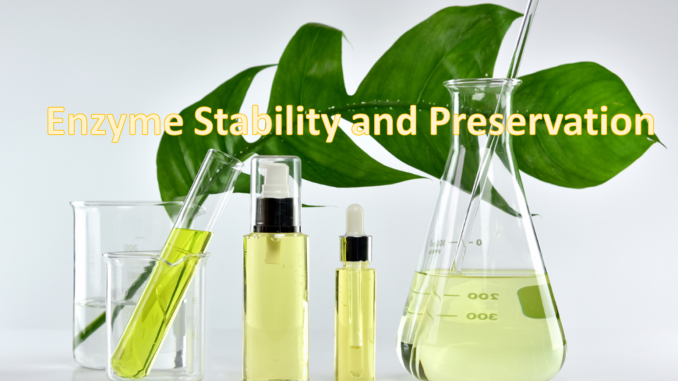
After obtaining the enzyme preparation, a further problem is how to improve the stability of the enzyme and prolong its expiration date.
Factors Affecting Enzyme Stability
- Most enzymes can be used, handled and stored under low temperature conditions (0°C-4°C). However, some enzymes have structural stability related to hydrophobic bonds, such as glutamate dehydrogenase of Streptococcus faecalis and pyruvate carboxylase in chicken liver mitochondria. Many enzymes can be stored frozen in liquid nitrogen or -80°C, such as micrococcal nuclease, serum alkaline phosphatase, etc., especially when 25% to 50% of glycerol or polyol is added.
- pH and buffer. Most enzymes are only stable over a specific pH range, and stability is reduced beyond this range. However, a small number of low molecular weight lysozymes, ribonucleases and the like are quite stable under acidic pH conditions. The type of buffer sometimes affects the stability of the enzyme. For example, Tris-HCl buffer may inhibit the activity of certain enzymes below pH 7.5. In addition, some enzymes that freeze in phosphate buffer can also cause inactivation.
- Enzyme concentration. Although the stability of the enzyme varies depending on the nature and purity, in general, the enzyme protein is stable at a high concentration, and at a low concentration, it is easy to dissociate and adsorb, and even prone to surface degeneration.
- Some enzymes are sulfhydryl enzymes that may be gradually inactivated in the air due to sulfhydryl oxidation. In this case, adding 1 mmol/L EDFA or DTT can help to increase its stability.
In order to ensure a high stability, in addition to avoiding the above unsuitable conditions, the most common method is to add some stable reagents.
Method for Stabilizing Enzymes
- Add substrate, inhibitor and coenzyme. This is a widely used method. For example, the addition of L-glutamic acid can often stabilize N-methylglutamate synthetase, the addition of citric acid can stabilize the aconitase, the addition of competitive inhibitor sodium benzoate or the prosthetic FAD can stabilize the D-amino acidase.
- Add SH-protective agent, such as glutathione, dimercaptoethanol (but easy to auto-oxidize) and DDT.
- Other additives. Certain low molecular inorganic ions, such as Ca2+ can protect α-amylase, Mn2+ can stabilize lysozyme, CI– can stabilize hyaluronidase, etc., and their mechanism of action may be to prevent peptide chain extension of the enzyme. For example, many enzymes are formulated in 1% aqueous benzene, and their catalytic activity can be maintained for a considerable period of time even at room temperature. Also, high molecular weight compounds such as serum albumin and polyhydric alcohols, particularly glycerin and sucrose, have been commonly used as cryopreservation additives in recent years. In addition, in some cases, organic solvents such as acetone and ethanol also exhibit a certain stabilizing effect. Finally, in order to prevent microbial contamination, toluene, benzoic acid and thymol can be added, which usually have no adverse effects on most enzymes.
Solid enzyme preparations are generally more stable, they have very low water content, and some can be stored in dark places for months or even more than one year without loss of enzyme activity. The thermosensitive enzymes are often treated by a freeze-drying method, such as enzymes for injection. Heat-resistant enzymes are often treated by spray drying. The salting-out precipitation and crystallization product can be directly added to the solid salt to form a “paste”, such as “ammonium sulfate paste”, or after being precipitated, it is placed in a large amount of cold acetone, loosened, and then dried by suction filtration. Immobilized enzymes are also another good way to increase enzyme stability.
Related Services at Creative Enzymes:

Leave a Reply